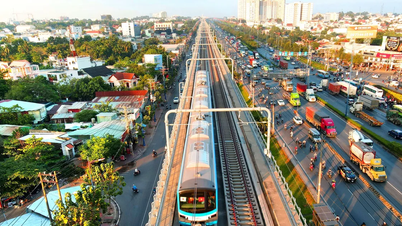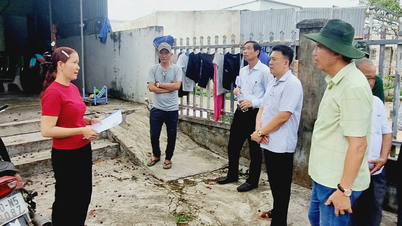SGGPO
The State Bank of Vietnam (SBV) has just issued Document No. 3205/NHNN-TTGSNH to credit institutions (CIs) and foreign bank branches regarding a number of issues in the operations of CIs and foreign bank branches.
 |
| State Bank of Vietnam requires commercial banks to strictly control "backyard" lending |
Specifically, the State Bank requires credit institutions to continue to improve credit quality, minimize the occurrence of new group 2 debts and bad debts, in which they pay attention to strictly controlling credit quality in areas with potential risks; classify assets, set aside and use risk reserves in accordance with regulations. At the same time, continue to resolutely implement measures to recover bad debts and debts that have used reserves to handle risks.
The State Bank also noted that joint stock credit institutions must comply with the provisions of the law on share ownership and credit granting to shareholders and related persons. For credit institutions with share ownership exceeding the prescribed limit, they must promptly implement drastic solutions to deal with this issue, closely coordinate with major shareholders to develop capital divestment solutions according to regulations and instructions of competent authorities to comply with the provisions of the law.
At the same time, strengthen internal inspection and control; continue to review, monitor and closely supervise credit granting activities, changes in share ownership of shareholders, shareholders and related persons, groups of shareholders that need attention (if any) at credit institutions, promptly detect and handle existing problems and violations in share ownership, credit granting, and capital contribution that are not in accordance with regulations, and prevent cross-ownership and manipulation of credit institutions' operations.
Strengthening internal review, inspection and control of domestic letter of credit (L/C) issuance activities, ensuring compliance with legal regulations and internal regulations (including paying attention to cases where customers are enterprises operating in the real estate and construction sectors); taking specific measures to control risks arising from domestic L/C issuance activities, minimizing the risk of bad debt, contributing to ensuring the credit quality of the bank.
A recent report sent to the National Assembly by the State Bank of Vietnam shows that the bad debt ratio of the entire system as of the end of February 2023 had reached 2.91%, a sharp increase compared to the 2% level at the end of 2022 and nearly double that at the end of 2021 (1.49%). Although the on-balance sheet bad debt of commercial banks (CBs) is controlled below 3%, the financial reports of the first quarter of 2023 of many CBs show a sharp increase in bad debt.
Source



![[Photo] Many young people patiently lined up under the hot sun to receive a special supplement from Nhan Dan Newspaper.](https://vphoto.vietnam.vn/thumb/1200x675/vietnam/resource/IMAGE/2025/5/18/6f19d322f9364f0ebb6fbfe9377842d3)

![[Photo] Ready for the top competitions of Vietnamese table tennis](https://vphoto.vietnam.vn/thumb/1200x675/vietnam/resource/IMAGE/2025/5/18/9c547c497c5a4ade8f98c8e7d44f5a41)






















![[Photo] General Secretary To Lam visits exhibition of achievements in private economic development](https://vphoto.vietnam.vn/thumb/1200x675/vietnam/resource/IMAGE/2025/5/18/1809dc545f214a86911fe2d2d0fde2e8)






























































Comment (0)